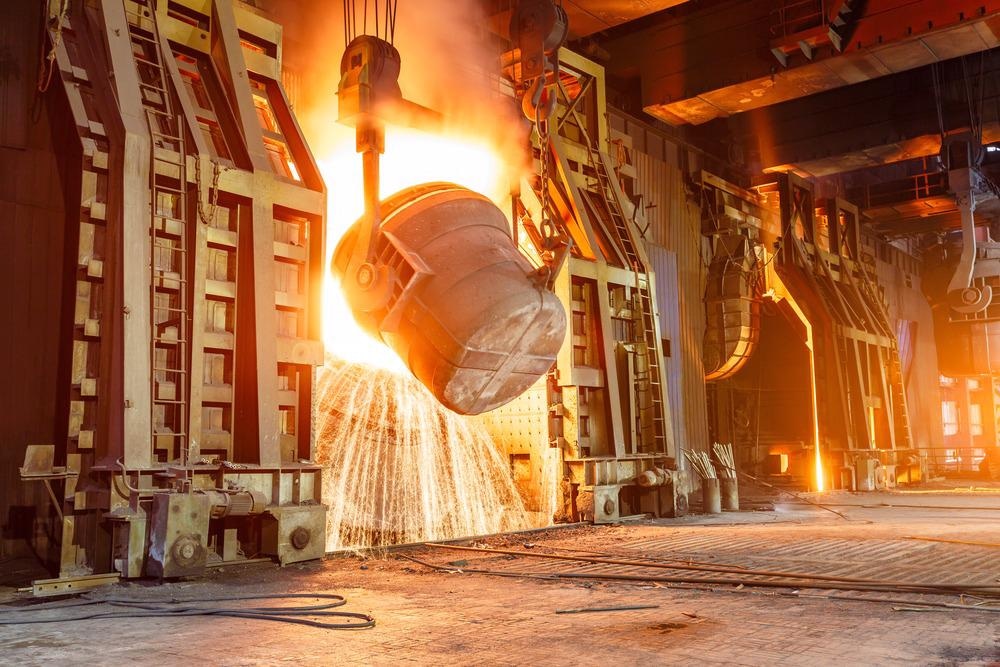 By Surbhi JainReviewed by Susha Cheriyedath, M.Sc.Feb 22 2022
By Surbhi JainReviewed by Susha Cheriyedath, M.Sc.Feb 22 2022In an article recently published in the Journal of Cleaner Production, the researchers discussed the steel manufacturing clusters in a hydrogen economy. They also presented the simulation of changes in steel production location and vertical integration in North-western Europe.

Study: Steel manufacturing clusters in a hydrogen economy – Simulation of changes in location and vertical integration of steel production in Northwestern Europe. Image Credit: ABCDstock/Shutterstock.com
Background
Existing regional industrial clusters will lose important assets when Europe (EU) moves to hydrogen-based primary steel production in the near future. A reorganization of sectors like this could result in a new geographical distribution of the steel industry, as well as a different level of vertical integration at locations. Both implications have the potential to act as drivers or impediments to modern technology investment and are thus relevant in terms of vertical site integration and regional policy.
Certain national governments and the EU Commission are aiming for a climate-neutral economy by 2050 or sooner. In a multi-level political system like the EU, however, actual implementation necessitates the participation, competence, and commitment of (sub-)national political organizations and stakeholders (e.g., companies). In this process, heavy industry and the steel sector face unique technological and economic hurdles.
While study into economic and technological feasibility, the general economy, and the socio-technical system has been conducted, there has been little investigation into how such a change would affect the competitiveness of the spatial structure and specific steel sites of European industry.
About the Study
In the present study, the authors described a method for modeling production stock investments in the steel industry of North-Western Europe. On the level of single facilities like blast furnaces, current spatial patterns were replicated using capacity, technical, and energy efficiency data. Both investments at specific production sites and in individual technologies were quantified using the developed model.
A situation with a clear transition to hydrogen-based manufacturing was compared to a reference scenario with no technological change. A Monte-Carlo study was used to investigate the effects of business cycles and the circular economy on regional value chains.
The authors investigated how decarbonization altered the geographical distribution corresponding to steel production by using a hydrogen-based indirect electrification technique. They examined the relative changes in the competitiveness of locations in North-western Europe as a result of the switch to a hydrogen economy.
Germany, Benelux (the Netherlands, Belgium, and Luxembourg), and France were the countries studied. For the purposes of the investigation, a spatial investment model was built and used for the steel industry in North-western Europe. At the facility level, present spatial patterns were replicated in the model by technology, capacity, and energy efficiency data (e.g., blast furnaces).
More from AZoM: What is Femtosecond Laser-Based 3D Printing?
Future investments in production sites and specific technologies were modeled using this approach, and the evolution of the future regional production structures was investigated in various scenarios under various market situations.
Observations
As per the modeling, the researchers observed that the existing overcapacity in the main steel production route mothballed until 2025. In accordance with regular reinvestment cycles, reinvestment in the direct reduced iron route begin after 2025, and the blast furnace route completely phased out by 2040. As a result of the increased availability of scrap, secondary steel manufacturing capacities could rise sharply after 2030.
Furthermore, the modeling revealed that by 2050, the vertical integration of production capacities in the electrification case reaches 79%, compared to 78% in the blast furnace route reference example. Germany was the region's largest producer. Although its annual crude steel output decreases by 5 million tonnes (10%) by 2030, the hot rolling capacity shows an increase. In the case of electricity in France, the trajectory flat-lined until 2030. The electrification situation in Belgium shows the possibility of reintegrating a non-integrated hot rolling plant.
It was also estimated that the steel industry in the Netherlands could integrate and focus at the highly attractive Ijmuiden location. Luxembourg's steel industry was found to be minor in comparison to its population and Gross Domestic Product (GDP). The Monte Carlo study demonstrated that the electrification-based strengthening of rail inland locations shown in the electrification base scenario would be a stable trend.
Conclusions
In conclusion, this study investigated the geographical trends that could result from integrating the steel sector into a hydrogen economy, as well as how areas and their stakeholders in densely industrialized North-Western Europe should prepare for such a change. The authors elucidate that the proposed model may be used to stimulate investment in steelmaking and hot rolling capacity at 84 locations across North-Western Europe.
They also highlighted that in terms of regional policy, stakeholders such as steel producers, labor unions, and regional development agencies – as well as energy infrastructure operators – should be encouraged to promote technological change in inland steelmaking clusters to achieve greenhouse gas neutrality.
Overall, this work demonstrated that the strong business cycles pose an additional threat to less favorable inland areas. The authors believe that the model's results could be used as an extra source of information for political and societal stakeholders in their engagements with businesses and labor organizations.
Disclaimer: The views expressed here are those of the author expressed in their private capacity and do not necessarily represent the views of AZoM.com Limited T/A AZoNetwork the owner and operator of this website. This disclaimer forms part of the Terms and conditions of use of this website.
Source:
Schneider, C., Steel manufacturing clusters in a hydrogen economy – Simulation of changes in location and vertical integration of steel production in Northwestern Europe. Journal of Cleaner Production 341, 130913 (2022). https://www.sciencedirect.com/science/article/pii/S0959652622005510.